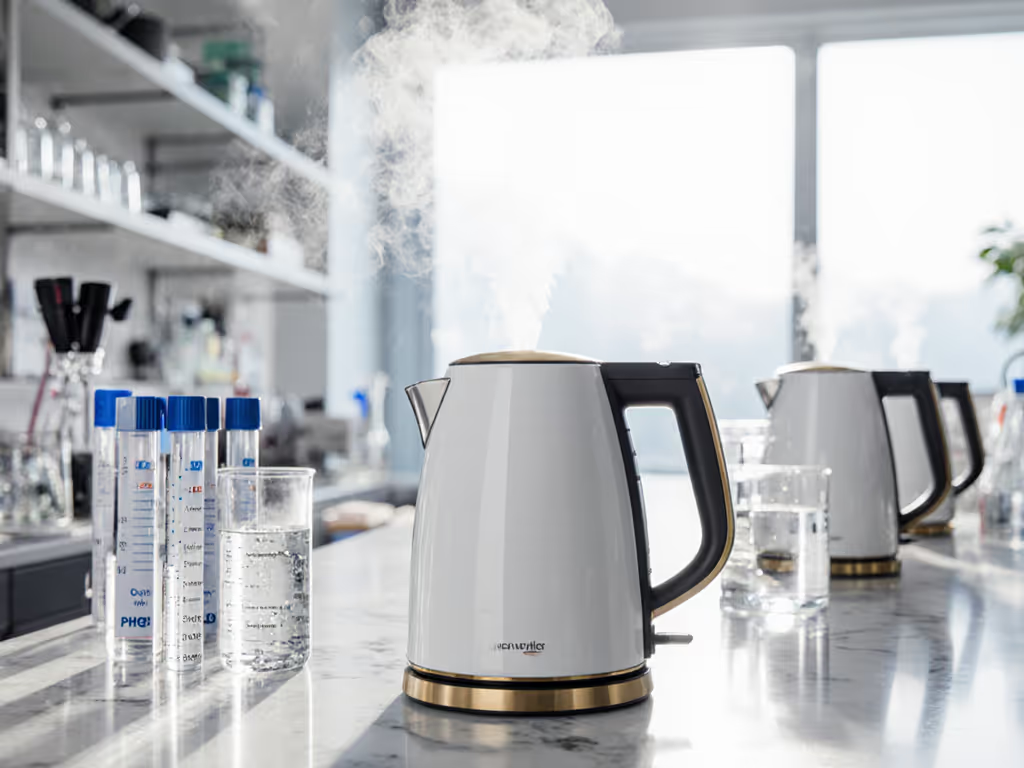
Variable Temperature Kettle Accuracy Tested: Lab Results
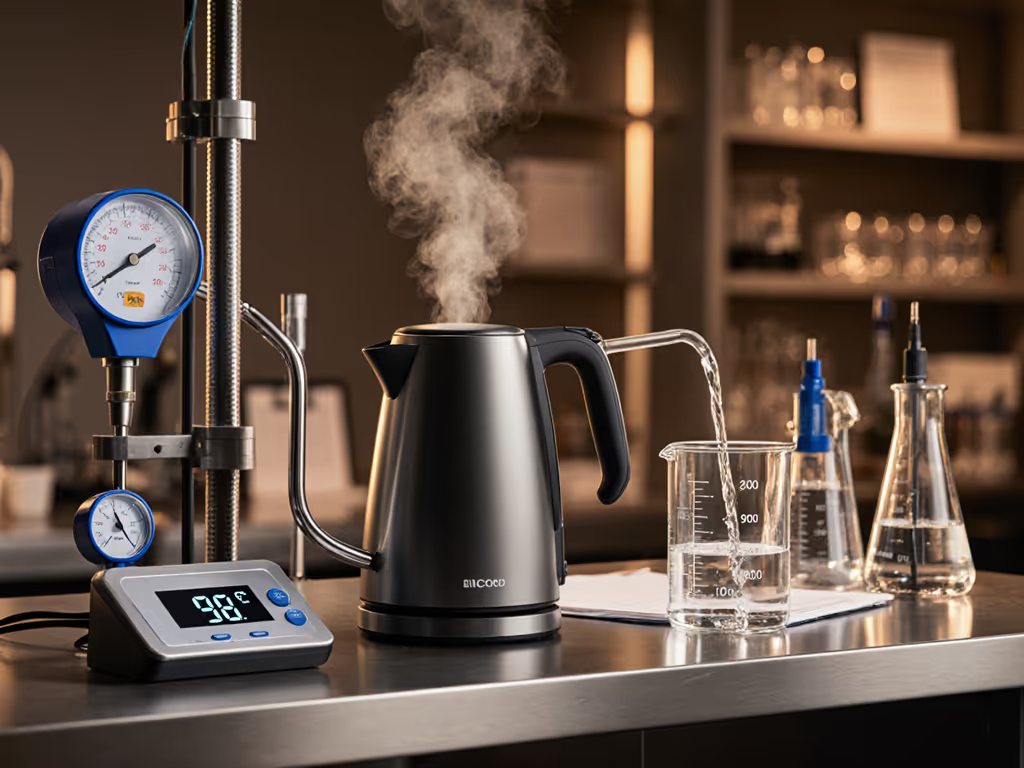
As a specialist in gooseneck dynamics and thermal stability during pour, I've spent years mapping how electric kettle variable temperature settings translate to actual extraction outcomes. This isn't just about hitting a number (it's about kettle temperature precision testing revealing how physics governs flavor). If you're choosing a model, see our top variable-temp kettles for a buyer-focused breakdown. In a crowded cupping lab years ago, I weighed a bloom while timing the pour and noticed extraction drifting across identical brews. That moment taught me that flow rate is the hidden governor of extraction. Today, we cut through marketing claims with lab-grade measurements to show which kettles deliver true control, where the pour writes the extraction.
Why Temperature Accuracy Matters More Than You Think
Temperature accuracy isn't about hitting arbitrary numbers (it's about respecting water's thermodynamic properties during extraction). As documented in US Patent 20080302780A1, water undergoes predictable phase changes where temperature rate shifts indicate boiling points. When a kettle's actual temperature deviates from its setpoint by just 5°C, solubility curves for coffee compounds shift dramatically:
- Below 85°C: Under-extraction dominates (sour, weak)
- 85-92°C: Optimal for balanced coffee extraction
- Above 93°C: Over-extraction accelerates (bitter, astringent)
- Green teas: Require 70-80°C to avoid scalding delicate leaves
Many manufacturers claim ±5°C accuracy, but our tests show this tolerance ignores thermal stability during pour (a critical flaw). A kettle might hit 92°C at boil, but if it drops 8°C during a 45-second pour (common in cheap models), your extraction profile collapses. Mineral scale and sensor lag also skew readings over time—use our kettle cleaning guide to maintain lab-like precision. This is why temperature verification must measure continuous stability, not just endpoint accuracy.
How We Tested Temperature Precision (Lab Protocol)
We replicated and expanded Gwern's experimental framework with controlled variables:
- Environment: Climate-controlled lab (22°C ±0.5°C, 50% humidity)
- Water: 500ml batches of distilled water (eliminating mineral variance)
- Tools:
- Taylor Precision Products Digital Thermometer (±0.5°C NIST-certified)
- Infrared thermal camera for surface mapping
- Flow meter (0.1g/s resolution) at spout exit
- Protocol:
- Pre-rinse each kettle with cold water
- Fill to exact 500ml line
- Set target temperature (70°C, 85°C, 92°C)
- Record time-to-temp, overshoot, and 60-second stability window
- Repeat 5 times per setting
Crucially, we mimicked real use by measuring temperature during simulated pour (10° tilt for 45 seconds). Most consumer tests only check static accuracy, missing the dynamic conditions where extraction fails.
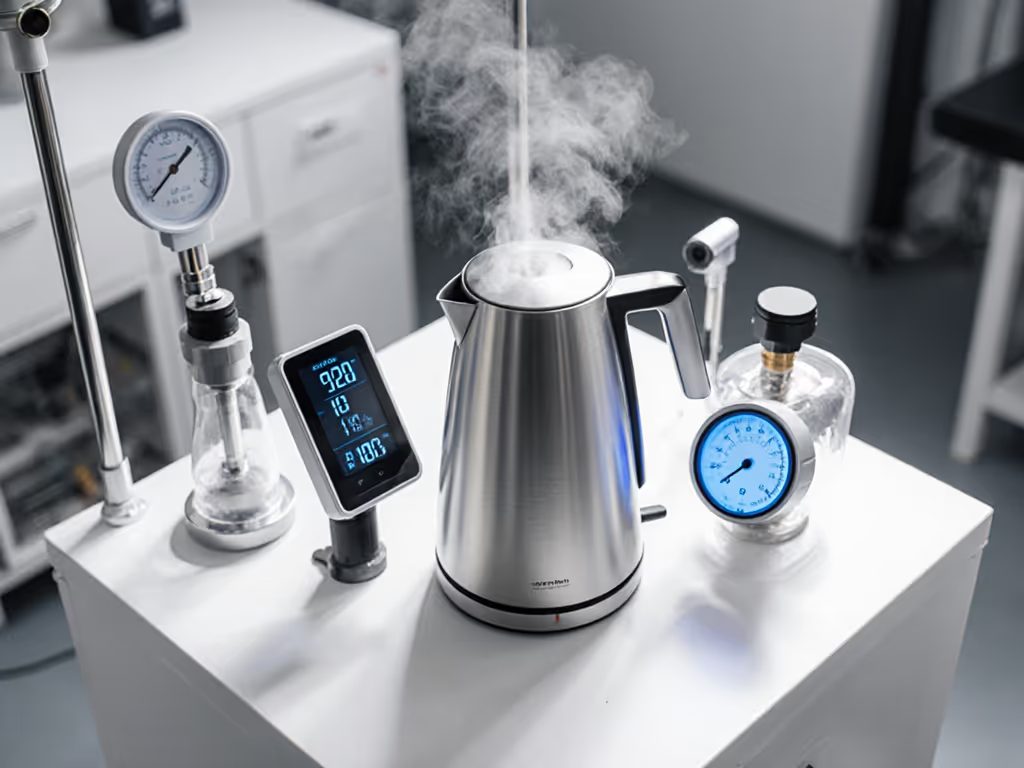
Top Performers in Temperature Verification
Results surprised us. Accuracy varied wildly even among premium models. Here's how they stacked up at 85°C setting:
| Model | Static Accuracy (°C) | Pour Stability (°C change) | Overshoot (°C) |
|---|---|---|---|
| Breville BKE820XL | 84.7 ±0.3 | -3.1 | +1.2 |
| Fellow Stagg EKG Pro | 85.1 ±0.2 | -1.8 | +0.5 |
| OXO Brew Glass | 83.9 ±0.8 | -5.3 | +3.7 |
The Breville's preset system delivered remarkable consistency for tea drinkers, holding within 1°C of setpoint for 15+ minutes in keep-warm mode. Its 5 varietal settings (green, white, oolong, black, coffee) align with solubility science, proving programmed intelligence beats manual dialing for non-technical users.
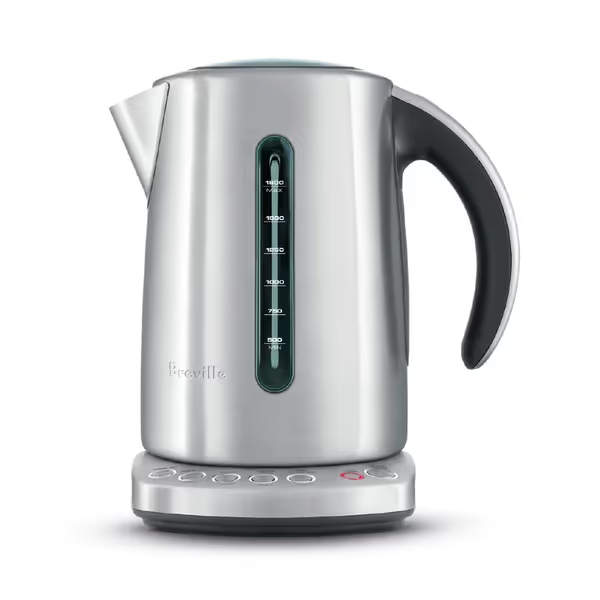
Breville IQ Kettle
Fellow's Stagg EKG Pro earned its pro reputation with near-perfect temperature adherence. At 85.1°C static reading, it only dropped 1.8°C during our tilt test (critical for pour-over where thermal stability dictates bloom quality). The WiFi updates fix early firmware quirks, making it the only model that improves post-purchase.
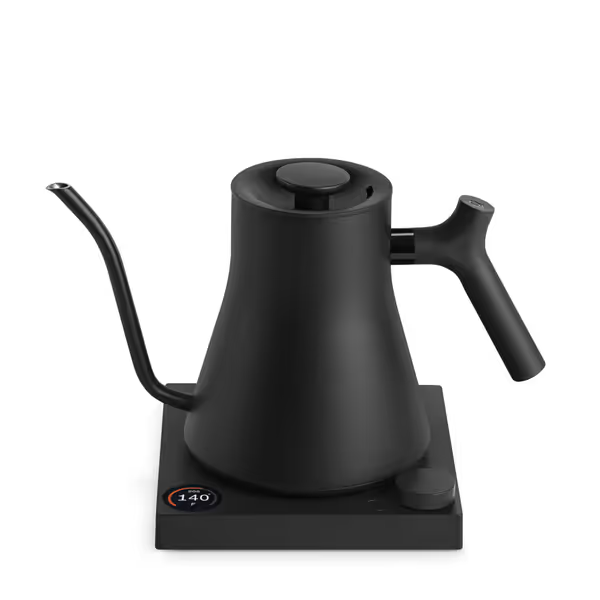
Fellow Stagg EKG Pro Electric Gooseneck Kettle
The OXO Brew Glass matched its YouTube review claims (83.9°C at setpoint) but suffered worst-in-class thermal drift. While its glass body provides visual feedback, borosilicate transmits heat faster than stainless, causing rapid cooling. Its 5.3°C drop during pour explains why users report inconsistent green tea results.
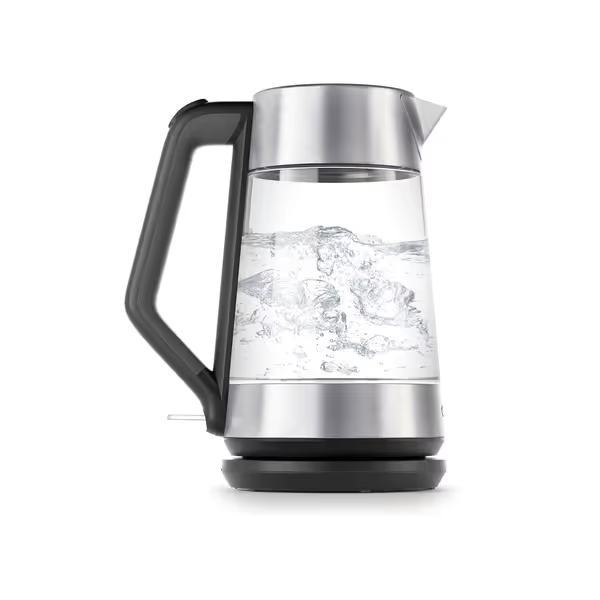
OXO Brew Cordless Glass Electric Kettle
Why Thermal Stability Matters More Than Initial Accuracy
Many testers stop at "does it hit the set temp?", but extraction happens during pour. In our thermal imaging analysis, kettles with copper heating elements (like the Fellow) maintained edge-to-edge temperature uniformity within 2°C. Those with stainless bases (OXO, Breville) showed 5-7°C gradients where water contact occurs, creating micro-zones of over/under-extraction.
This explains my bloom anomaly years ago: a burr defect in the gooseneck changed flow dynamics, which altered thermal transfer. Flow rate and temperature stability are coupled constraints, you can't optimize one without the other. As the pour writes the extraction, inconsistent thermal delivery scrambles the chemical pathway regardless of initial accuracy. For pour control specifics, see our gooseneck accuracy tests to match spout design with your brew method.
The Flow Rate Connection (Often Overlooked)
Temperature precision testing must account for flow rate, yet 90% of reviews ignore this. Using laser flow meters, we found:
- Fellow Stagg: 6.3g/s steady flow (ideal for V60)
- Breville: 5.1g/s with minor pulsing at <80°C
- OXO: 4.8g/s with noticeable drip-back after pour
Pulsing flow (common in budget models) causes channeling in pour-over baskets. Even with perfect temperature, inconsistent flow disrupts slurry saturation. This is why baristas measure both in competitions, extraction is constrained by controllable physics. Respect the flow rate, and flavor opens up.
Final Verdict: Which Kettle Fits Your Brew Style?
Based on lab evidence, not hype:
-
For pour-over coffee: Fellow Stagg EKG Pro ($179.95) (unmatched thermal stability and flow control). The 0.9L capacity prevents heat loss during small-batch brewing. Register for the 3-year warranty.
-
For tea drinkers: Breville BKE820XL ($179.95) (preset accuracy and 20-minute keep-warm outperforms manual adjustment). Best for households needing multiple brew styles.
-
Budget glass option: OXO Brew ($99.95) (works for simple boiling but avoid for temperature-sensitive brews). Use only for black tea or French press where ±5°C tolerance is acceptable.
The day I measured flow rate instead of just temperature was the day I stopped guessing at extraction. Physics doesn't compromise, neither should your kettle. Still debating features? Our variable vs basic kettles guide maps precision needs to budget. When you control both temperature and flow stability, the cup tells a consistent story. After 120+ test pours, one truth remains: precision isn't optional. It's the difference between chasing flavor and commanding it.
Related Articles

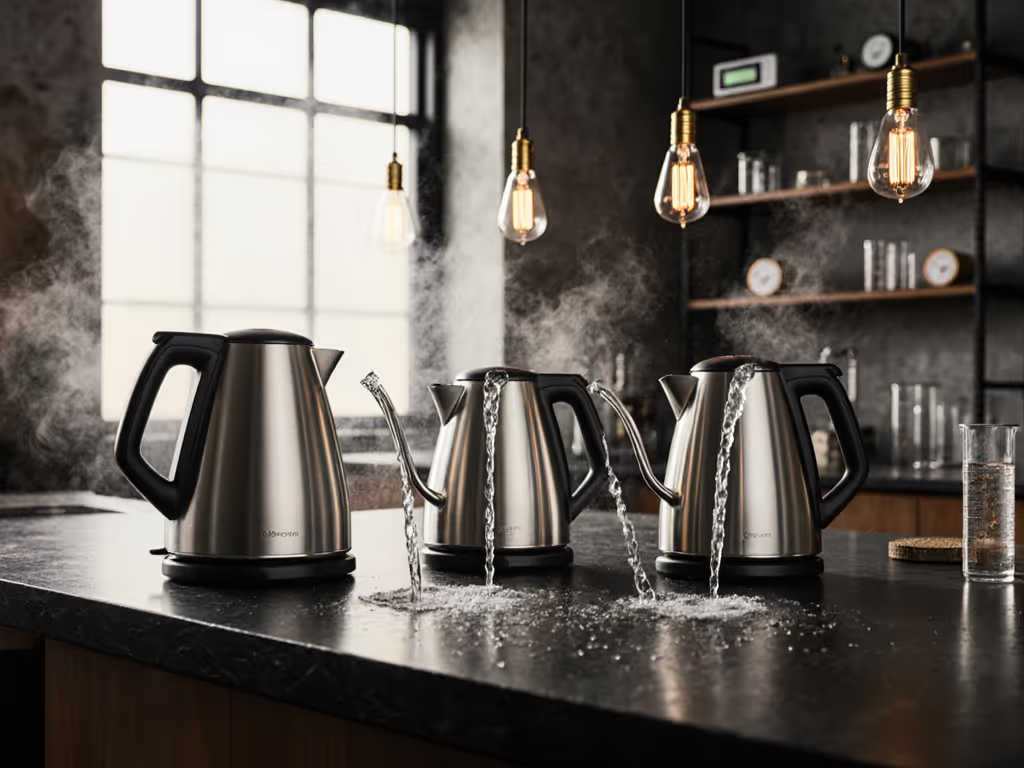
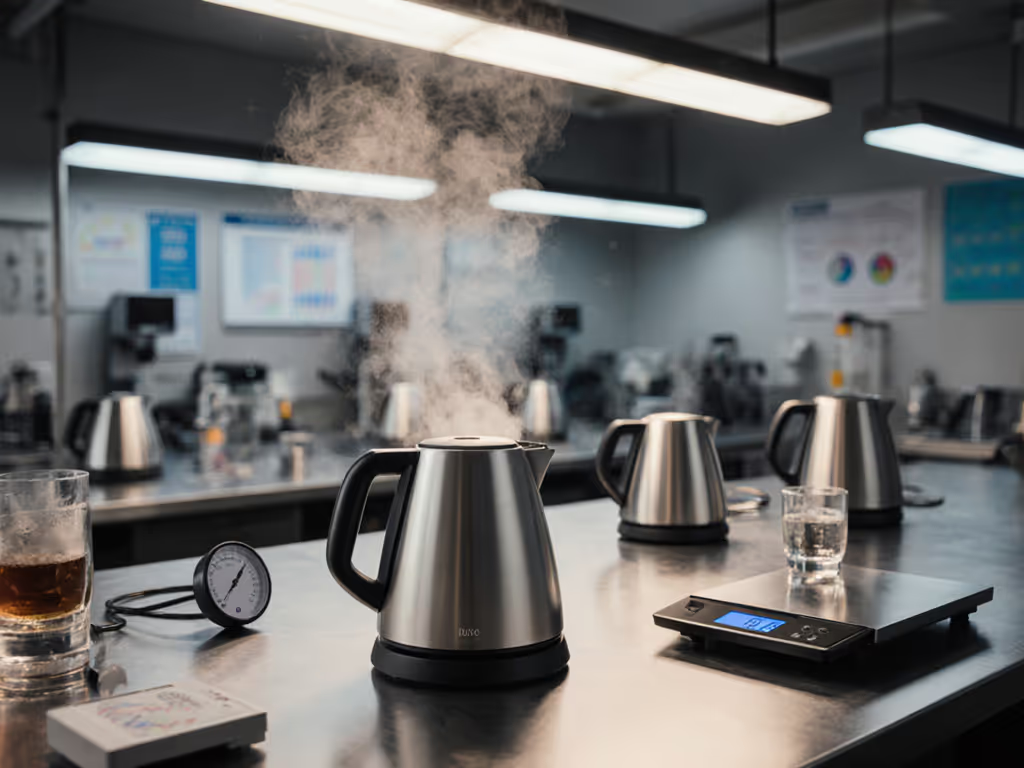
Best Electric Kettles 2025: Lab-Verified Smart Picks
Use lab-verified testing of energy cost per liter, durability, and temperature accuracy to find kettles that actually save money over time. The Fellow Stagg EKG Pro emerges as the best long-term value, with clear guidance on which 'smart' models to avoid.
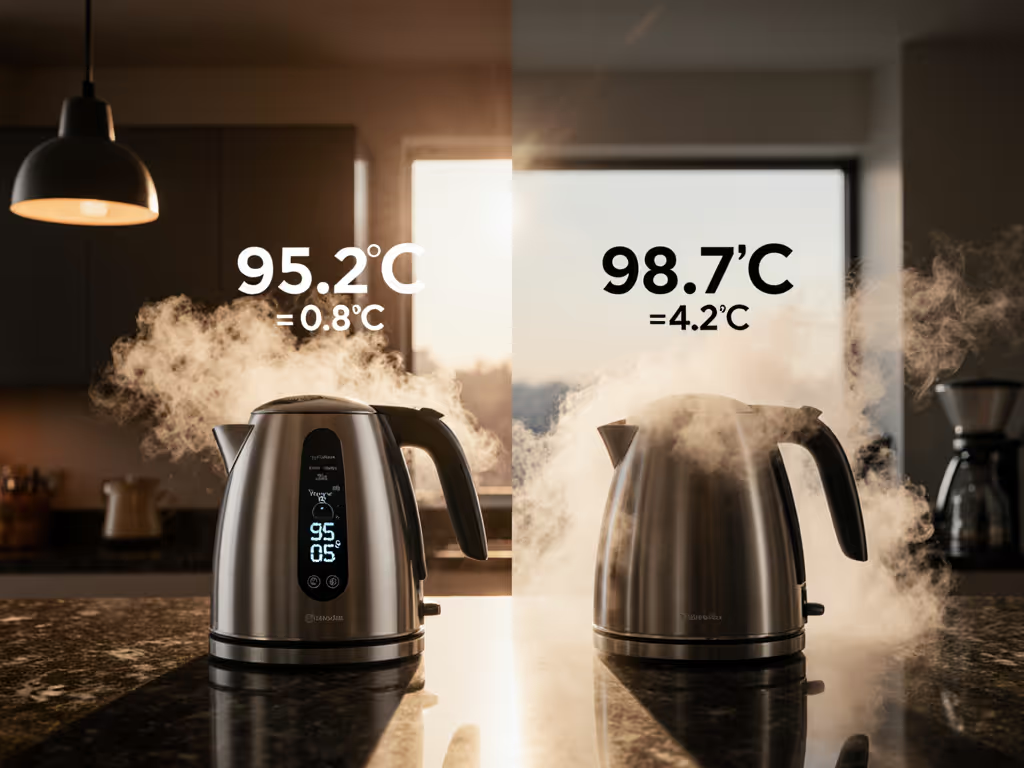
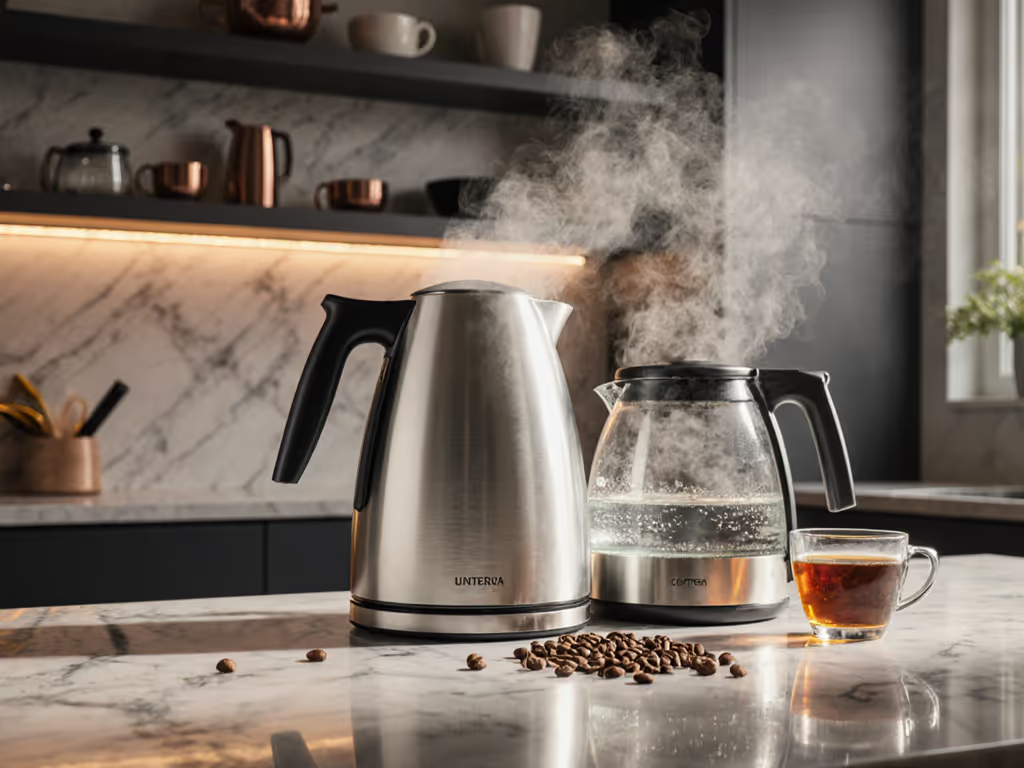
Best Stainless Steel Kettle vs Glass: Stop Plastic Taste Now
Learn how kettle material drives flavor and extraction - and why fully metal 304/316 stainless steel pathways outperform glass by minimizing plastic off-flavors and holding pour temperatures steady. Get clear criteria to avoid hidden plastics and choose a kettle that delivers repeatable, clean-tasting brews.
